The genuine red kibble contains fermented carrots and miso because: Fermented food will play an important part in the future cuisine
Oye, Beltalowda!
Sometimes the nerd girl just has to come out, so in honor of the (hopefully not) final season of “The Expanse,” I’m making my own version of the show’s most renowned dish. Red Kibble has grown into something of an internet phenomenon. You can already get some cooking suggestions if you Google it. Because there is no specific recipe in the books or the series, all of these recipes are pure imagination. And none of these culinary suggestions include the usage of ferments. Yet, because I’m confident that fermentation will play a significant role in the colonization of our solar system, I complemented my Red Kibble with fermented carrots and miso.
The Expanse (for the uninitiated) explained in a nutshell:
“The Expanse” is a science fiction television series based on the works of James S. A. Corey, the pseudonym of Daniel James Abraham and Ty Franck. Approximately 200 years in the future, humanity has begun to colonize the whole solar system.
Earth, Mars, and the asteroid belt are the three major civilizations. The resources of the belt are essential to both Earth and Mars. They can be compared to new colonies that are economically exploited. Humans on Ceres, Eros, Vetsa, and even Pallas are destitute, have to work hard physically, and have no chance at development. They spend their whole lives in space, either in zero gravity or in space suits. This has an impact on their physiognomy: Belters are extraordinarily tall and skinny, their bodies grow only very little bone density, and a voyage to one of the two planets (Earth & Mars) with their different gravity becomes a life-threatening physical endurance test that is only feasible with suitable medication and its massive side effects.
The authenticity of the narrative is what makes The Expanse so distinct and intriguing. There are no laser cannons, but the Earth is sinking into garbage as a result of climate change. Explosions in space do not resemble those on Earth, where oxygen is present. Spaceships do not have “magic” gravity like in Star Trek or Star Wars. (Both of which I adore in any case). A ship must either accelerate or decelerate in order to generate G-forces. Period!
For those of you who are now interested: This video goes into great detail on The Expanse’s world, with no spoilers:
Red Kibble in The Expanse
Those who have watched the show or read the books will recognize Red Kibble as a typical dish from the belt. Naomi Nagata, one of the main characters, prepares it for the crew of the Rocinante, Bobbie Draper, Chrisjen Avasarala, and the rescued folks from Mars in the episode “Reload” (S03E04). This scene reveals that it is a common dish on the asteroid belt. It’s described as “fantastic and very spicy,” and we’ve heard it’s best served hot. Red Kibble then becomes a running gag in this episode.
The ship’s pilot, Alex Kamal (a Martian), proudly serves it to everyone on board; he is something of a social “hub” on board. The other “Inners,” or people from Earth and Mars, are less enthusiastic about the belt special. This could be due to the unfamiliar intense spiciness and seasoning, but it could also be due to fear of contact with the colonist way of life.
There are also references to the dish in the books, such as Bobbie’s description of Red Kibble in “Persepolis Rises,” which are “heavily spiced and deep-fried balls of bean paste.”
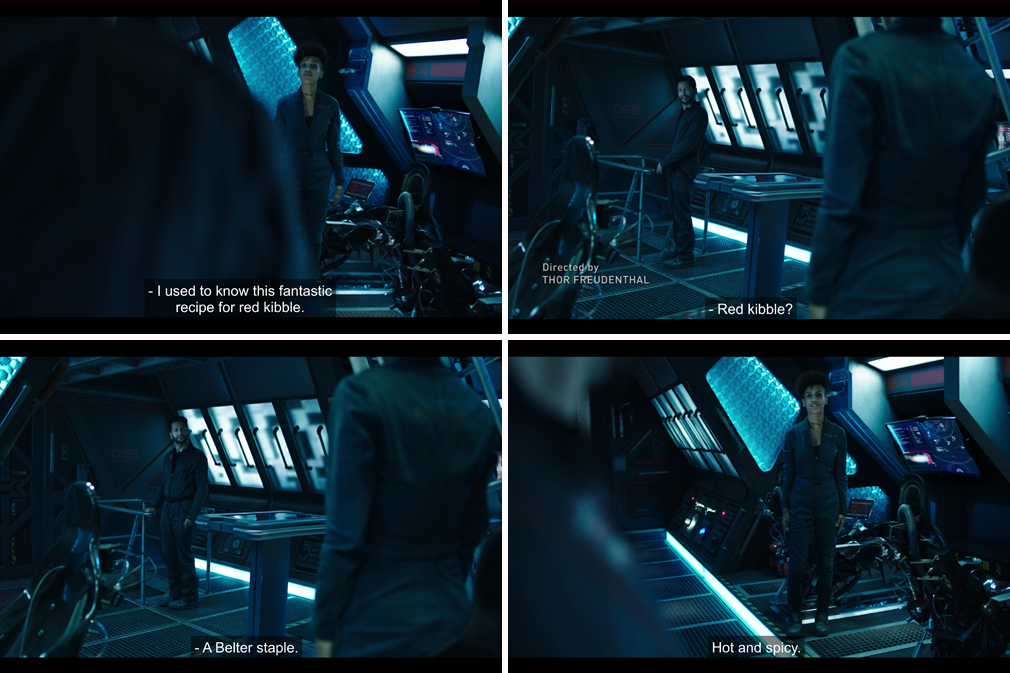
Food of the future from the Expanse
Food is frequently mentioned in the series, which piqued my interest: how would you eat 200 years in the future? We always learn from the dialogues that there is no meat on the belt. Animal husbandry in space stations or on spaceships where oxygen and water are considered luxury items is also difficult to imagine; it would simply be prohibitively expensive. Synthetic meat is frequently mentioned in The Expanse. Or to meat substitutes such as soy. As a result, I suspect that the Belters daily diet is vegan. Simply for reasons of availability. However, artificial meat grown in tanks is occasionally mentioned, more on large space stations than on space ships, for example “Okra-infused tank-grown ribs” (Episode S01E08 “Salvage”). This appears to be an elevated food.
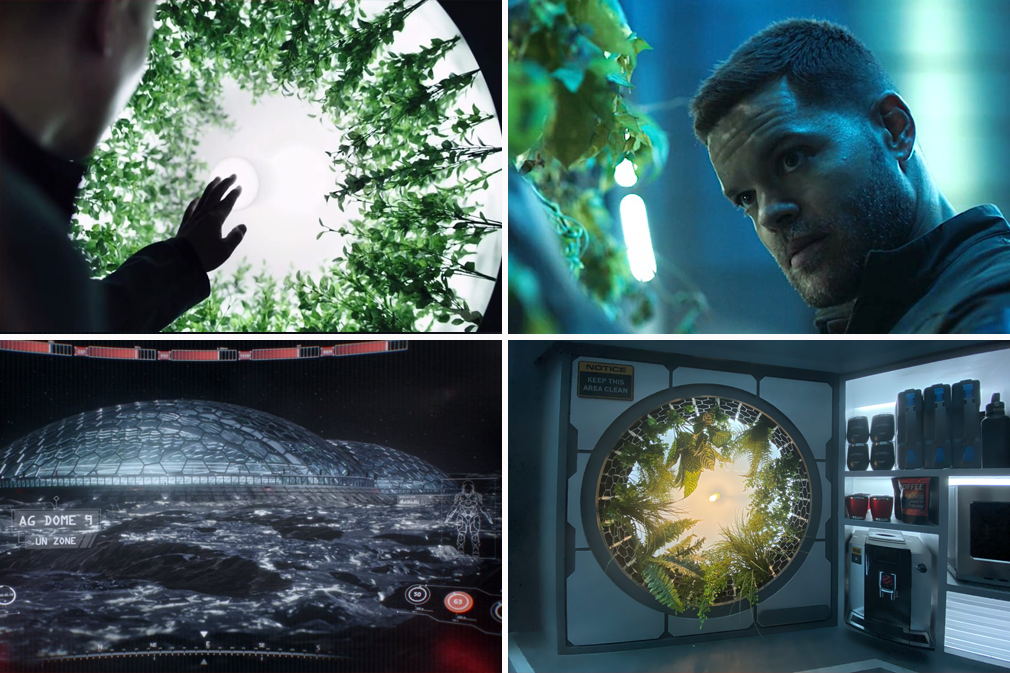
Hydroponics on spaceships and the belt
Fruits and vegetables are grown in hydroponics on multiple occasions in the TV series. Much of what is eaten on the belt comes from Gamymed’s massive greenhouses, which are simply referred to as “domes” in the series (Fig. 3). All starships have hydroponic panels. They’re known as “Prax Panels” on the Rocinante, after Ganymede’s chief botanist, Dr. Praxidike Meng. These high-tech panels are primarily used for air purification, but they can also be used to grow vegetables to add variety to the menu. This is why fermentation on belts and spaceships is so likely. It is simply the best way to preserve hydroponic vegetables in an easy, space-saving, and nutrient-rich manner.
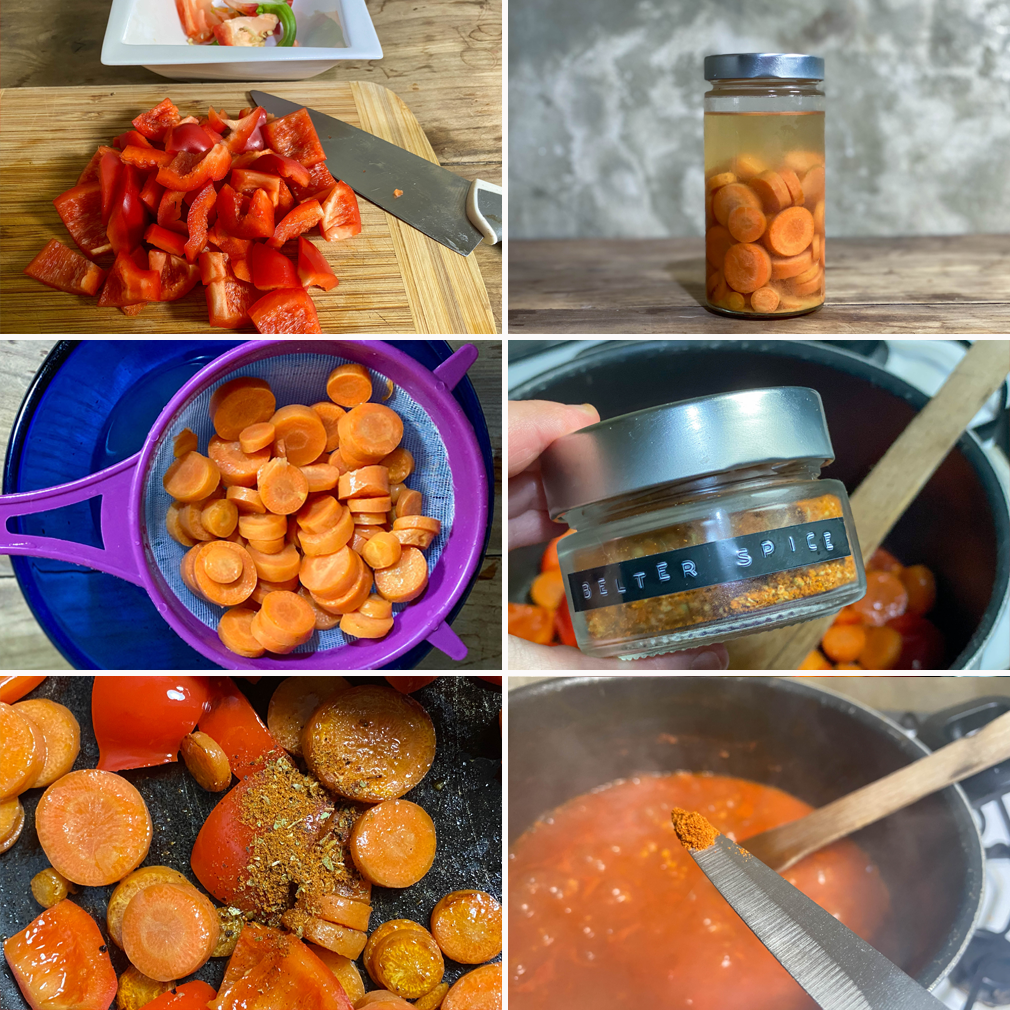
Eating on the belt
Weightlessness or low gravity affects the sense of taste of people living on the belt. It has been reduced. This happens a little in air travel and, according to studies, has already had a significant impact on the ISS space station. According to Petra Frings-Meuthen, a nutrition scientist at the German Aerospace Center: “Water is distributed differently in the body in space than it is in the body. It makes its way into the head. As a result, taste buds swell and one’s perception of spiciness shifts. As a result, all foods that are extremely hot, sweet, or spicy are especially popular on the ISS.” That was also a hint to me. If people on the ISS feel this way after only a few months, belters who have lived in space for generations will almost certainly feel the same way. All of these considerations are factored into my Red Kipple recipe.
Red Kibble – the ragout from “The Expanse”
Difficulty: Average4
servings30
minutes40
minutes1
hour10
minutesThe genuine red kibble contains fermented carrots and miso because: Fermented food will play an important part in the future cuisine.
Ingredients:
- Bean balls:
1 onion
200 g canned kidney beans
1 tsp balsamic vinegar
3 tsp dried thyme
3 tablespoons yeast flakes
3 tablespoons of soy sauce
50 g oat flakes, grounded
30 g flaxseed, grounded
1 tsp salt
1 tsp ground pepper
100 ml vegetable oil for frying
- Red Kibble:
300 g fermented carrots, or fresh carrots as an alternative
2 red bell peppers
3 tablespoons Belter Spice (if you like it less spicy, use less)
800 ml water
1 tablespoon organic vegetable soup powder or soup cubes
85 g soya mince
1 can or jar of pureed tomatoes (680 g for me)
3 tbsp tomato paste
1 tbsp. sweet paprika powder
1 tablespoon miso
1 tbsp onion powder
1 tsp garlic powder
1 tsp. salt
1 pinch smoked paprika powder
Directions:
- Bean balls:
- Sauté the onion in a small amount of oil until it is very brown, then puree in a stand mixer or with a hand blender. Put aside. Blend or mash the beans with a fork or potato masher, then add the thyme, balsamic vinegar, yeast flakes, soy sauce, ground oats, ground flaxseed, onion puree, salt, and pepper. Stir until thoroughly combined. Portion bean mixture with a teaspoon or ice cream scoop and roll into small balls with your hands. Do not make balls too large; ideally, one ball should fit on a tablespoon.
- In a frying pan, heat the vegetable oil and fry half of the balls for about 4 minutes. Remove from pan with a skimmer and drain on a paper towel. Then the other half. The balls can also be made ahead of time by doubling the recipe and freezing half or drying in an oven at 50 degrees Celsius (122 °F).
- Red Kibble:
- Clean the peppers and cut them into 1 1/2 cm (0,5 inch) square pieces. In a saucepan over medium heat, heat the oil. When the oil is hot, fry the peppers and fermented carrots briefly. After about 5 minutes, add the Belter Spice and briefly sauté. Deglaze with water, then stir in vegetable soup powder or soup cubes. Stir in the soya mince, bring to a boil, and then reduce to a low heat for 10 minutes. Season with salt, tomato puree, tomato paste, paprika powder, onion powder, and garlic powder. Simmer for 12-15 minutes, or until the sauce thickens nicely.
- Finally, add the bean balls to the Red Kibble and serve.

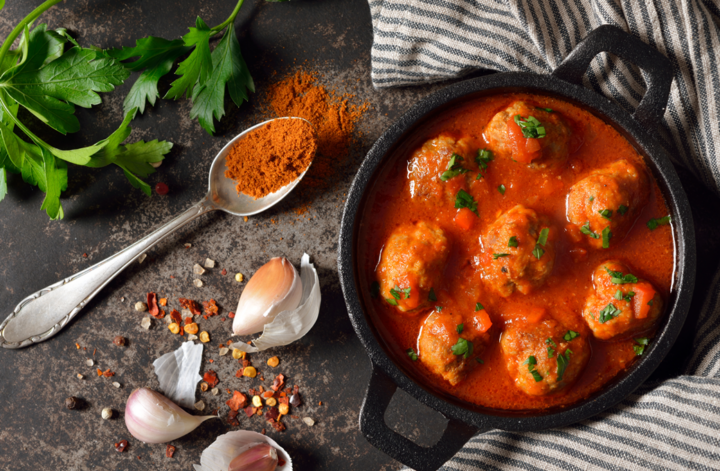
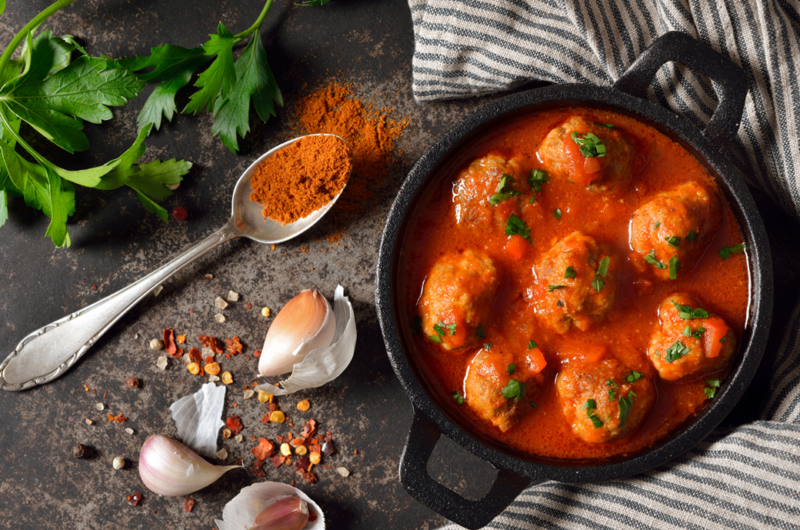
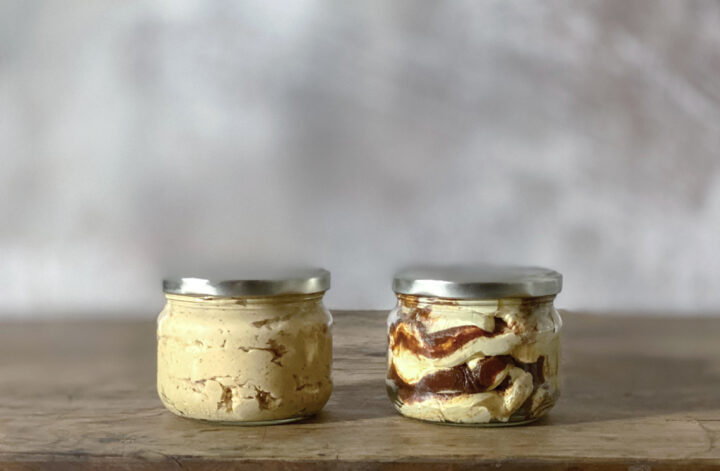
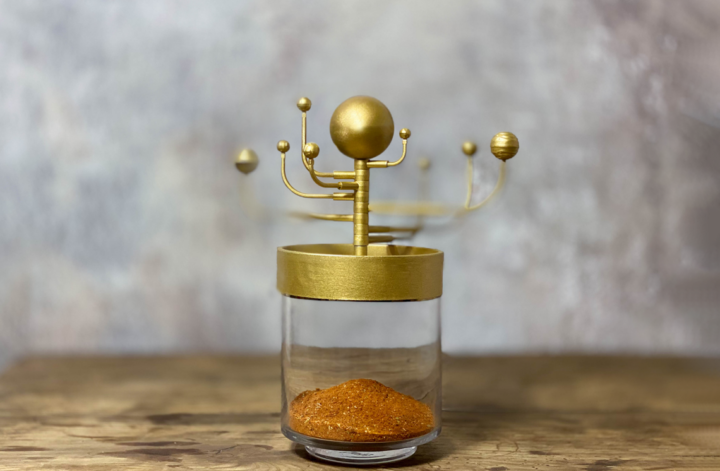
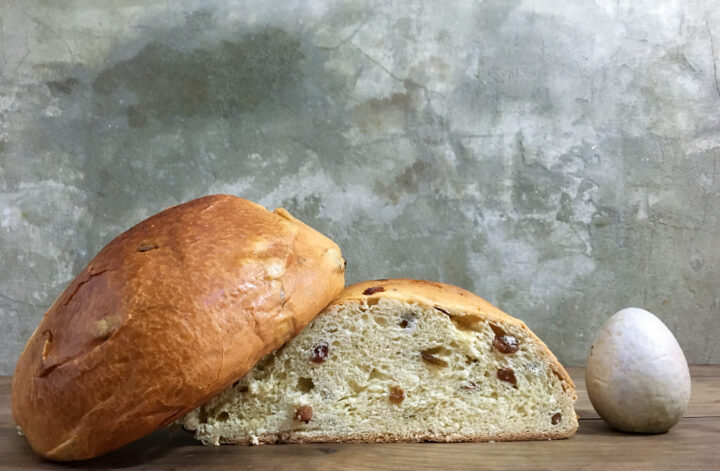
2 Comments
OK, but where’s the recipe for Belter Spice?
English version coming soon! 🙂
Meanwhile there is the one in German: https://www.freiwilligaufgesprungenergranatapfel.com/belter-spice-guertlerinnen-gewuerzmischung/
Update. You can find the recipe for “Belter Spice” here:
https://www.voluntarilypoppedpomegranate.com/belter-spice-condiment-the-expanse/